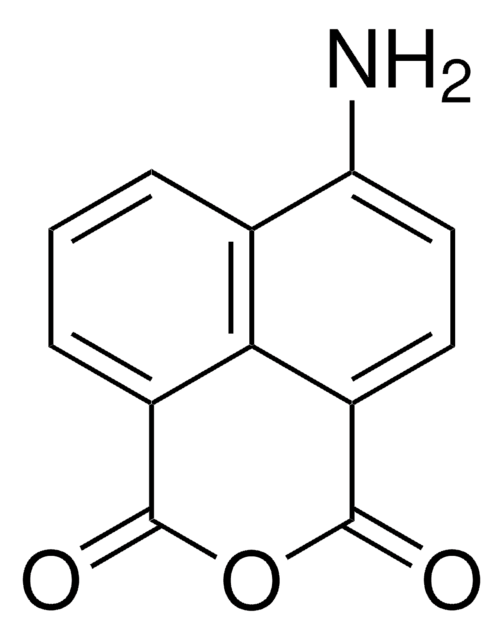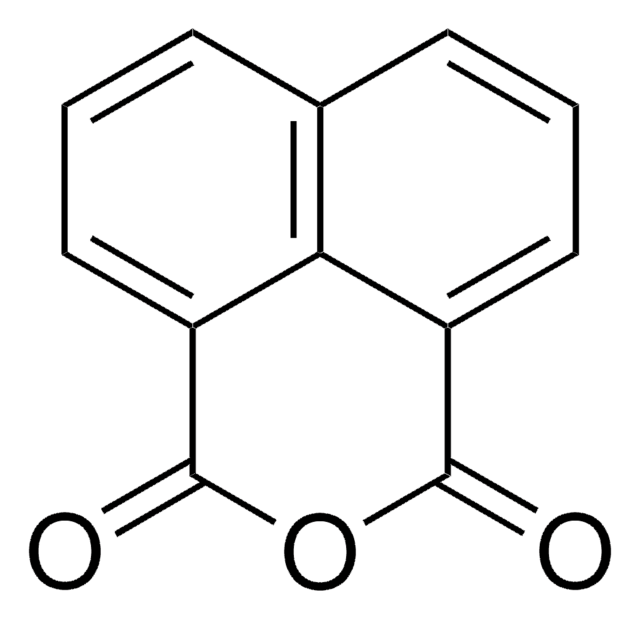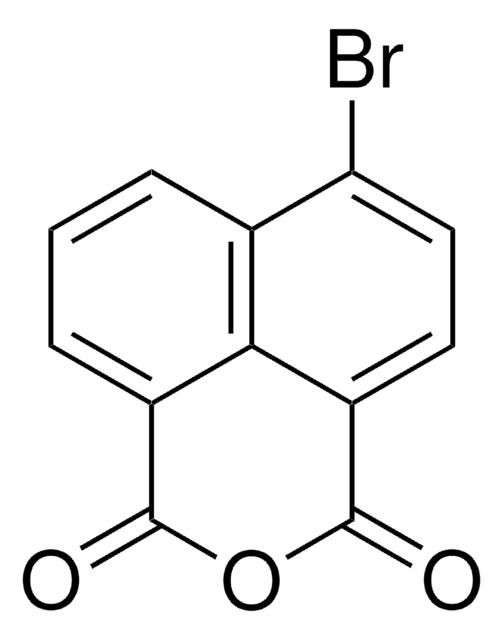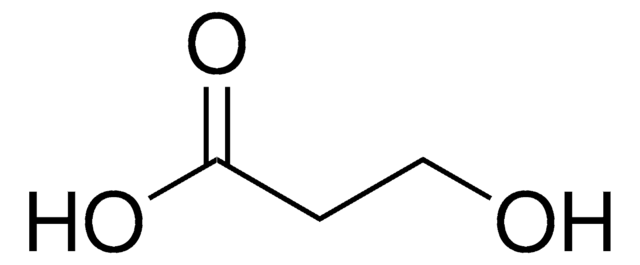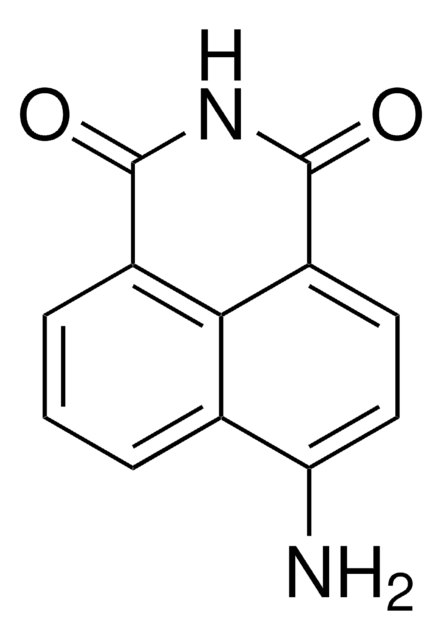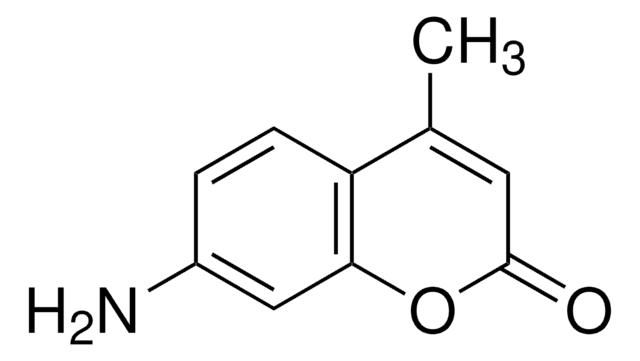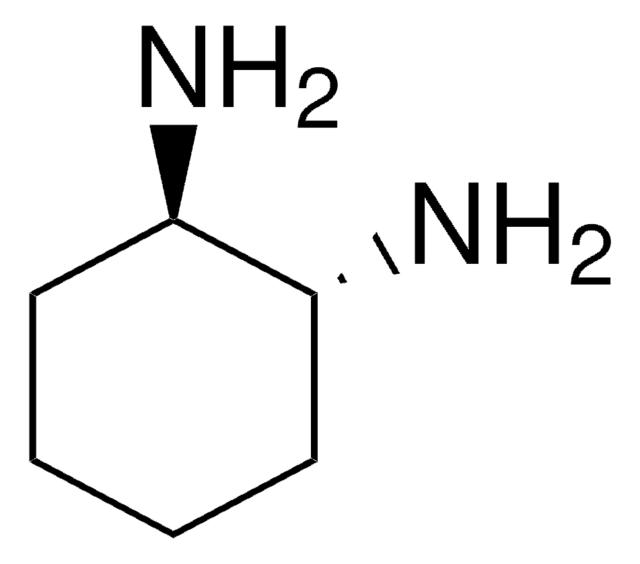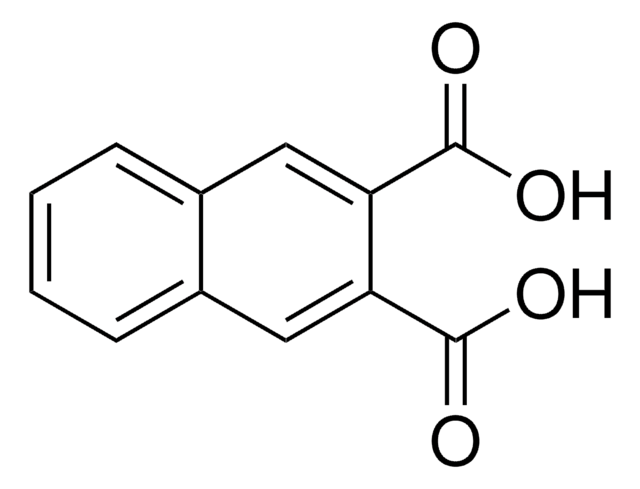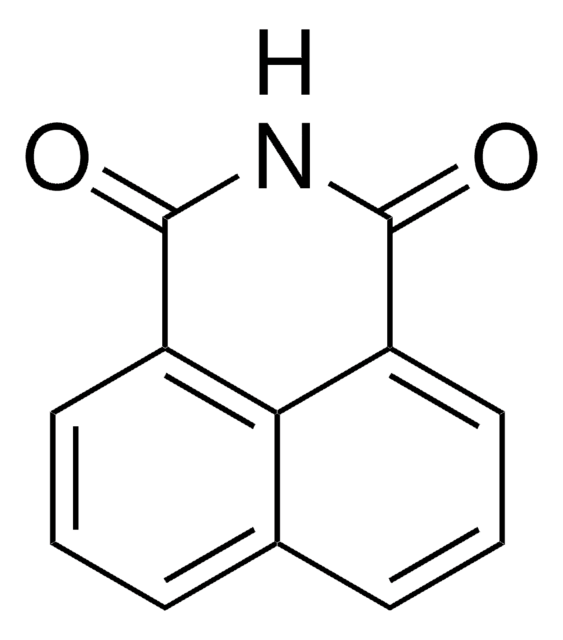324345
4-Nitro-1,8-naphthalic anhydride
95%
Synonym(s):
4-Nitronaphthalene-1,8-dicarboxylic anhydride
Sign Into View Organizational & Contract Pricing
All Photos(2)
About This Item
Empirical Formula (Hill Notation):
C12H5NO5
CAS Number:
Molecular Weight:
243.17
Beilstein:
237909
EC Number:
MDL number:
UNSPSC Code:
12162002
PubChem Substance ID:
NACRES:
NA.23
Recommended Products
Quality Level
Assay
95%
mp
226-229 °C (lit.)
SMILES string
[O-][N+](=O)c1ccc2C(=O)OC(=O)c3cccc1c23
InChI
1S/C12H5NO5/c14-11-7-3-1-2-6-9(13(16)17)5-4-8(10(6)7)12(15)18-11/h1-5H
InChI key
LKOZHLXUWUBRDK-UHFFFAOYSA-N
Looking for similar products? Visit Product Comparison Guide
Related Categories
General description
4-Nitro-1,8-naphthalic anhydride is a yellow crystalline nitrocompound widely used in the field of dye synthesis and cellular imaging.
Application
4-Nitro-1,8-naphthalic anhydride can be used:
- As a precursor to synthesize N-phenyl-amino-1,8-naphthalimide based fluorescent chemosensor to detect nitro-antibiotics at ppb level.
- As a building block to synthesize shape memory polymers due to its ability to undergo Diels-Alder reaction
- As a fluorochrome substrate for nitrogen reductase for noninvasive hypoxia imaging in cancer detection.
- As a precursor to synthesize amphiphilic naphthalimide dyes with good color brilliancy.
Signal Word
Warning
Hazard Statements
Precautionary Statements
Hazard Classifications
Eye Irrit. 2 - Skin Irrit. 2 - STOT SE 3
Target Organs
Respiratory system
Storage Class Code
11 - Combustible Solids
WGK
WGK 3
Flash Point(F)
Not applicable
Flash Point(C)
Not applicable
Personal Protective Equipment
dust mask type N95 (US), Eyeshields, Gloves
Choose from one of the most recent versions:
Already Own This Product?
Find documentation for the products that you have recently purchased in the Document Library.
Jin Zhou et al.
Chemistry, an Asian journal, 11(19), 2719-2724 (2016-02-09)
A lysosome-targeting fluorescent off-on probe has been developed by one-step synthesis for detecting lysosomal nitroreductase and hypoxia. The probe is constructed by incorporating morpholine (a lysosome-targeting unit) into 4-nitro-1,8-naphthalimide (as a fluorochrome and specific substrate for nitroreductase), and the detection
Desislava Staneva et al.
Sensors (Basel, Switzerland), 20(12) (2020-06-25)
In this study, a novel 6-(allylamino)-2-(2-(dimethylamino)ethyl)-1H-benzo[de]isoquinoline-1,3(2H)-dione (NI3) was synthesized and characterized. Its copolymer with styrene was also obtained. The photophysical characteristics of NI3 were investigated in organic solvents and the results were compared with those of its structural analogue, 2-allyl-6-((2-(dimethylamino)ethyl)amino)-1H-benzo[de]isoquinoline-1,3(2H)-dione
Awad I Said et al.
Spectrochimica acta. Part A, Molecular and biomolecular spectroscopy, 196, 76-82 (2018-02-13)
A novel fluorescence sensing 1,8-naphthalimide fluorophore is synthesized and investigated. The novel probe comprising two different binding moieties is capable to detect selectively Fe3+ over the other representative metal ions as well as a combination of biologically important cations such
Jun Yang et al.
Biotechnology and applied biochemistry, 66(1), 33-42 (2018-09-20)
A nitroreductase-encoded gene from an efficient nitro-reducing bacterium Streptomyces mirabilis DUT001, named snr, was cloned and heterogeneously expressed in Escherichia coli. The purified Streptomyces nitroreductase SNR was a homodimer with an apparent subunit molecular weight of 24 kDa and preferred NADH
Elizabeth A Jolley et al.
Biophysical chemistry, 239, 29-37 (2018-05-29)
DNA duplexes are stabilized by many interactions, one of which is stacking interactions between the nucleic acid bases. These interactions are useful for designing small molecules that bind to DNA. Naphthalimide intercalators have been shown to be valuable anti-cancer agents
Our team of scientists has experience in all areas of research including Life Science, Material Science, Chemical Synthesis, Chromatography, Analytical and many others.
Contact Technical Service